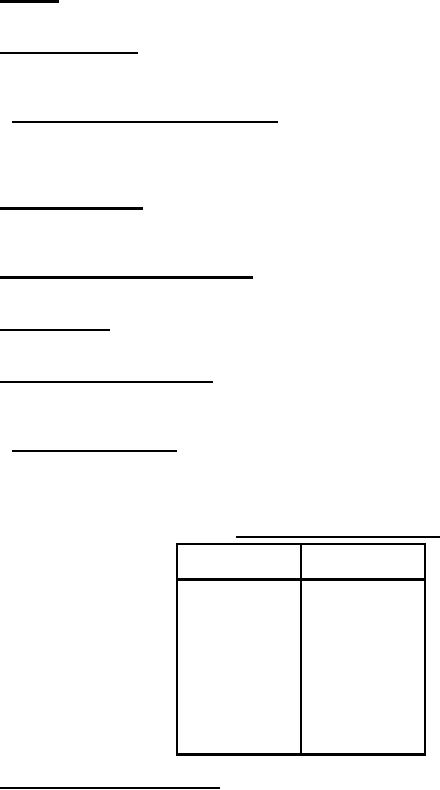
MIL-DTL-26500G
3.16 Humidity. During or after the test specified in 4.6.12, the insulation resistance values shall not be
less than 1,000 megohms.
3.17 Insulation resistance. When tested as specified in 4.6.13, the insulation resistance shall be
greater the 5,000 megohms when measured between two adjacent contacts, and between the contact
closest to the shell and the shell.
3.17.1 Insulation resistance (high temperature). When tested in accordance with 4.6.13.2, the
insulation resistance of connectors shall be greater than 200 megohms for classes G, H, R, K, and E and
100 megohms for class F when measured separately between any two adjacent contacts, and between
the shell and any contact.
3.18 Salt spray (corrosion). After testing in accordance with 4.6.14, the unmated connectors shall
show no exposure of base metal due to corrosion. Class H specimens shall be exposed unmated and
shall meet the requirements of 3.26 on the first mating after corrosion testing.
3.19 Magnetic permeability, except class H. When tested in accordance with 4.6.15, the relative
permeability of the connectors shall be less than 2.0 µ.
3.20 Temperature life. When tested in accordance with 4.6.16, the connectors shall perform
satisfactorily and pass the succeeding tests in the qualification test sequence.
3.21 Insert retention (except class H). When tested in accordance with 4.6.17, connectors less cable
supports or any insert supporting accessory shall withstand an axial load of 75 lbf /in2 in both directions
for at least 5 seconds without being dislocated from their normal position in the shell.
3.21.1 Insert retention (class H). When tested in accordance with 4.6.17.1, class H connectors shall
withstand an axial load in both directions as specified on table IV to the axis of the connectors, for 5
seconds minimum, without displacement of contacts or insert. Connectors shall then meet requirements
of 3.22.
TABLE IV. Insert retention loads (class H).
Shell
Load
(lbf /in2)
size
250
24
300
22
700
20
1000
18
1250
16
1750
14
2000
12
2750
10
3000
8
3.22 Air leakage (class H receptacles). When testing in accordance with 4.6.18, and subjected to a
pressure differential of 15 lbf /in2 across the receptacle, the receptacle shall not exhibit an air leakage rate
that will produce a pressure change of more than 0.01 micron of mercury per cubic foot per hour (1 x 10-7
standard cm3/s at 1 atmosphere). The specific leakage rate shall apply through the connector only and
not through the brazed or welded joint between the connector and the mounting flange.
11
For Parts Inquires submit RFQ to Parts Hangar, Inc.
© Copyright 2015 Integrated Publishing, Inc.
A Service Disabled Veteran Owned Small Business